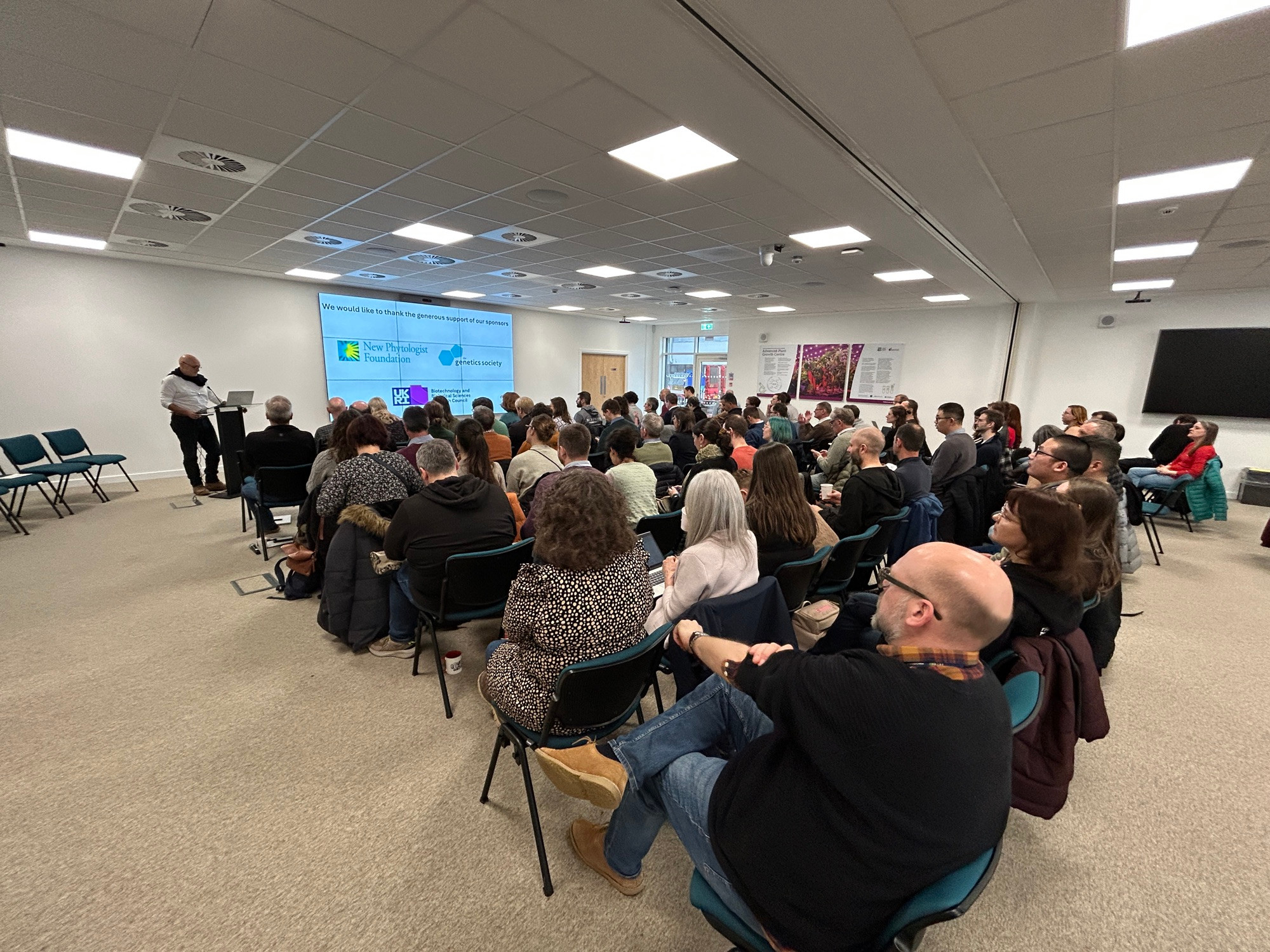 |
| Picture from day 1, source: https://bsky.app/profile/intbarleyhub.bsky.social/post/3lheka47ggs2z |
(back to day 1)
Ruth Hamilton talks about her work on re-domesticating barley from crosses of wild barley (H. spontaneum) and elite cultivar RGT Planet. She looks at non-shattering, spring type, short plants and photoperiod response. This is being done in the field and polytunnels. She's asked whether she has observed fertility problems due to Planet's translocation (no).
Sariel Hubner talks about local adaptation in wild barley and how that informs future predictions about adaptation. They carry out mapping and SNP calling at AWS, code available at https://github.com/hubner-lab. They have done GEA analyses: https://www.biorxiv.org/content/10.1101/2024.09.02.610836v2 . He reports adaptative haplotype blocks with high LD that accumulate TE insertions under stress conditions.
Ernesto Igartua talks about recent work around the genomic drivers of Mediterranean barley diversity, spanning different projects. He summarizes the differences found in key flowering genes (FT1, VRN1, VRN2, CEN, Vrs1) among up to 17 Med populations. He also shows recent experiments on heat strees before flowering that showed differential responses of genotypes. In questions Miguel Sánchez from ICARDA reminds that in wheat winter VRN1 alleles provide "protection" against both frosting and heat, likely as seen in barley.
Andreas Maurer summarizes a decade of Insights from HEB-25: Flowering Time in Wild x Cultivated Barley Crosses. They have found 8 major flowering time QTLs mapping to the usual suspect genes, plus denso and an unknown region. They are exploring the use of environmental data to model flowering time, see for instance https://pubmed.ncbi.nlm.nih.gov/33713844 . In unpublished work they are using a climatic index as a trait in GWAS analysis and found that only some flowering genes are associated to it. He also shows that an exotic ELF3 alelle similar to one in wild barley was instrumental in barley domestication: https://academic.oup.com/jxb/article/74/12/3630/7100059
The team of Morten Lillemo just started the ProteinBar project, which is using genomics and phenomics to increase protein content from 10% to 14%. 95% of barley production in Norway is for animal feed. The import soybean for that also. They have partnered with several companies. Shows field image data (multispectral, Yara N) of a barley panel with two N levels that undercoverd a 2-row vs 6-row divide. They see that modern cultivars uptake more N, with 2-row superior to 6-row. In field experiments with 2 varieties they cannot see a reponse of plants to higher N supplements, different genotypes should be tested. He insists that having a pricing policy in place that favours high protein barley will be essential for this to fly, as those varieties might be lower in yield.
Einar Haraldsson presents their work on Hordeum erectifolium, part of the pan-Hordeum consortium, particularly on the physiological and genomic study of drought-adaptive traits. It has more veins and several enlarged gene families compared to related grasses and Morex. However, has similar leaf rel water content than Morex, but maintains erect leaves during drought.
Eyal Fridman and his group are performing analysis and mapping of barley spike traits using a cytoplasm-aware population. I missed most of this talk unfortunately. In questions he says that the cytotype diversity among barley cultivars is tiny compared to that in wild barleys.
Paolo Pesaresi presents results results on the optimization of canopy photosynthesis in barley. They are searching for allelic variants, as part of the BestCrop consortium, to reduce antenna size/reduced clorophil contentl and increased yield/photosynthetic performance. The mutants (ie hus1) are pale green and some have no effect on flower time, grain yield and tolerate higher seed density and reduce transpiration; however some are more sensitive to cold. They have published some of these mutants: https://link.springer.com/article/10.1007/s00299-024-03328-2. Explains that in nature plants compit for light and that's why they are dark green; crops are under more controlled conditions and can tolerate less efficiency.
Ronja Wonneberger talks about the identification of candidate genes conferring resistance to bird-cherry oat aphid in Hordeum spontaneum. Results after 20yr of work by previous colleagues. There are no completely resistant cultivars. Previous results published at https://doi.org/10.1007/s00122-019-03287-3 . Found an interval with 5 DEGs on 2H, all resistance-related annotations. She also mentions that other genomic regions have poor read mappings suggesting that PAV can also be involved.
Ales Pecinka talks about parental conflict and unbalanced genome dosage in barley. He finds that paternal excess is more lethal in embryo rescue experiments than maternal excess. They are carrying out functional analysis of chromatin dynamics and microscopy to find imprinted genes in barley, finding n=255. One example is gene LYS3, which encodes a prolamin box TF. Some results published at https://academic.oup.com/plcell/article-abstract/36/7/2512/7651082
We also attend a live demo of 3D-RNAseq carried out at https://sharp-ga.com , see the paper at https://www.tandfonline.com/doi/full/10.1080/15476286.2020.1858253 . The features I like most are the analysis at isoform level and the generated report. Currently it uses the lima pipeline, pathway analysis will be added in the future. Currently in beta, look like this will be a commercial service, don't know about pricing.